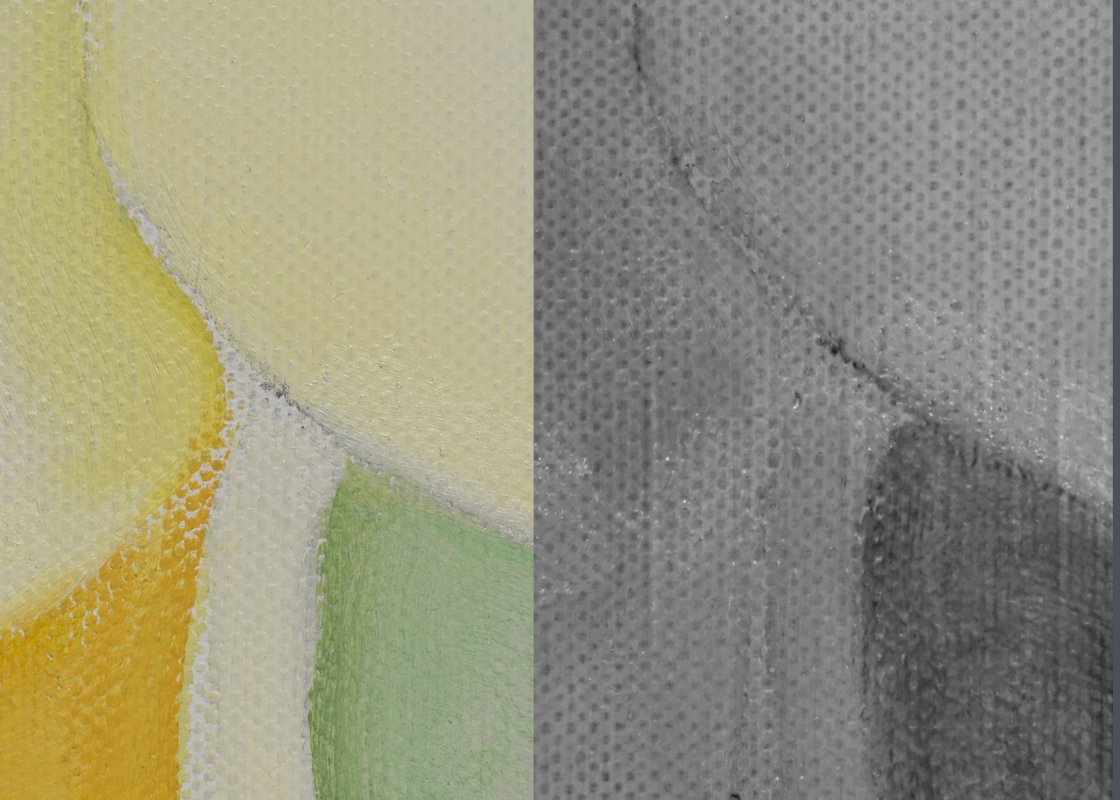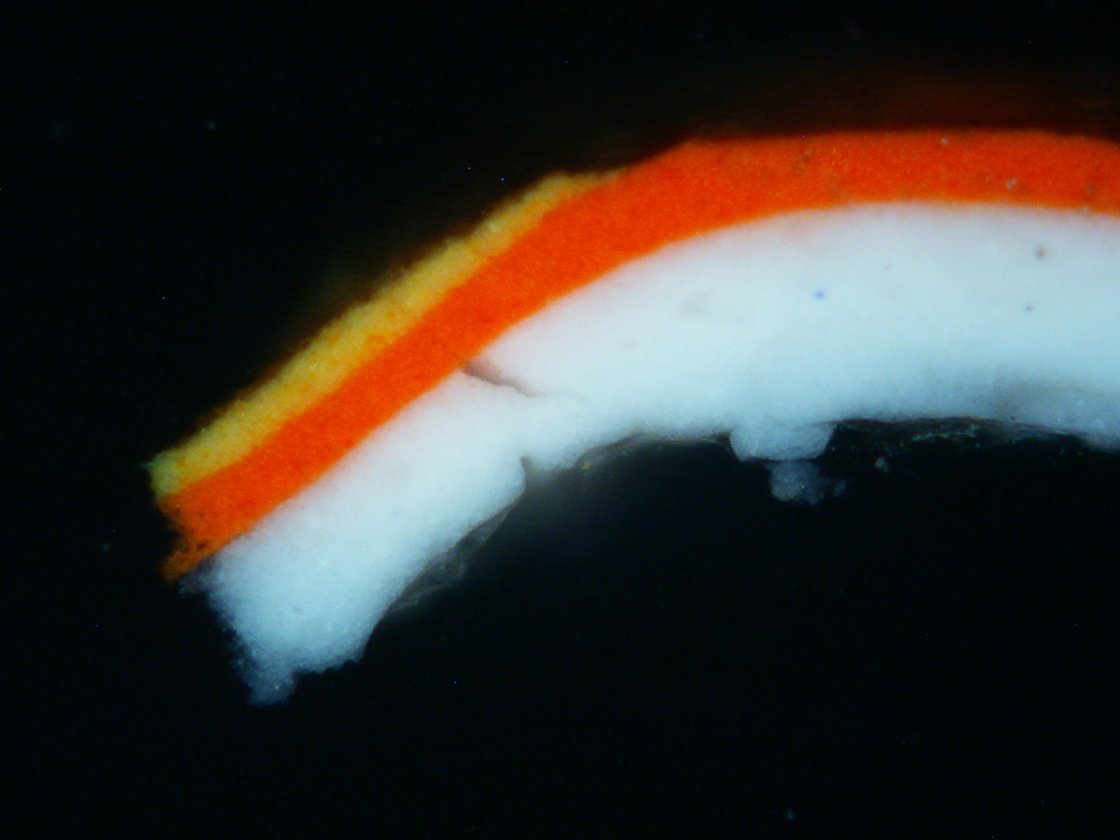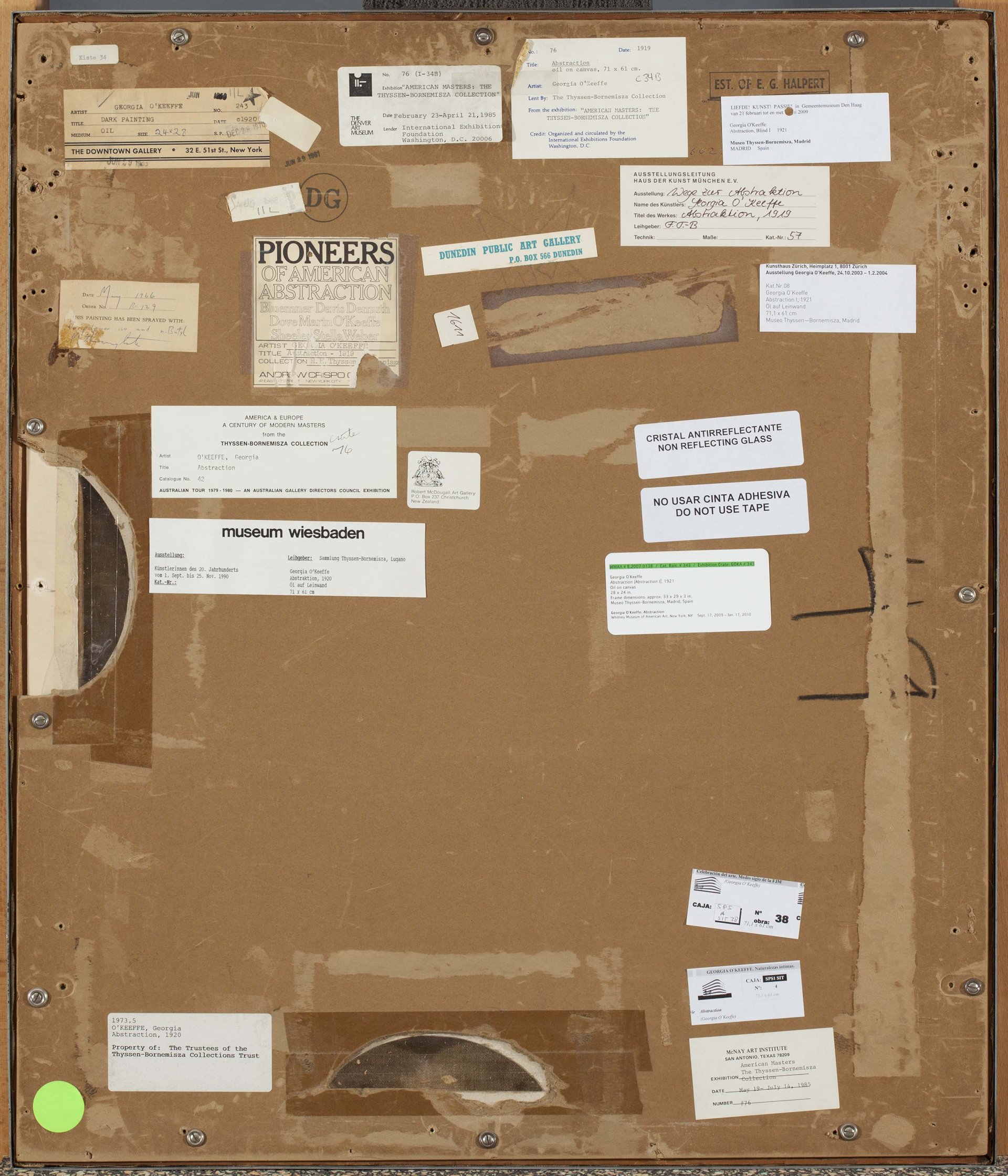Technical study
To mark the first Georgia O’Keeffe retrospective in Spain, the Museo Nacional Thyssen-Bornemisza decided to carry out research on the five paintings belonging to its collections, dated between 1921 and 1957, in order to examine the artist’s technique in depth.
The study was aimed primarily at analysing the materials found in all the layers of these works so as to be able to reconstruct her creative process. Another objective was to detect possible alterations in the works and compare the results with the line of research begun by the Georgia O’Keeffe Museum in Santa Fe, New Mexico, with which we collaborated closely throughout.
The study confirmed a unique quality: the artist’s genuine interest in the conservation of her paintings. O’Keeffe successfully reconciled her artistic expression with a painstaking technique for preserving the appearance of her works over time.
Georgia O'Keeffe's Pictorial Procedure

Drawing
The artist planned her work painstakingly. She acquired the habit of starting with preliminary drawings during her formative period. She made sketches from life and later used photographs, subsequently developing the works in her studio.
She used a pencil or charcoal to draw very fine lines on the canvas before applying the paint. These strokes can be seen using photomacrography and infrared reflectography and usually match the lines of the final composition.
The use of color
Georgia O’Keeffe was passionate about colour and used it as an expressive device. She worked with different hues, degrees of saturation, gloss, transparency and texture, bearing in mind the colour of the support and its preparation in the final appearance of the picture surface.
She used a very rich palette of colours and always combined two or three to achieve a particular tone. She generally employed lead white as a matrix or base pigment and added coloured pigments.
She handled almost imperceptible hues with expertise. In White Iris No. 7, she used different types of white (lead, zinc and titanium) depending on the desired finish, though they are only identifiable under ultraviolet light.
Catalogue of colours
Hundreds of colour cards painted by her, a sort of catalogue of colours, were found in her studio. They were important aids as they provided her with samples for achieving the desired hue and value.
She placed them beneath a glass-sheet palette so that she could see them while mixing colours. She mixed the oil paints in the palette to achieve a homogeneous tone and applied in a very thin layer, leaving the canvas weave visible.


Wet-into-dry
The optical microscope image of a sample taken from the painting shows the homogeneousness of the paint mixture and the sharply defined layers. She always allowed the previous application to dry to prevent the tones from blending – a technique known as wet-into-dry.
Protection of Paintings: Backing boards
O’Keeffe protected her paintings with backing boards. She made them herself from industrial cardboard and cut out half-moon-shaped finger grooves. They display signatures, titles and symbols that identify the artist, such as the initials “O.K.” inside a star, and labels indicating technique, restoration work, or participation in shows. All this provides essential information about the works and their exhibition history. The reverses are therefore of great documentary value.









